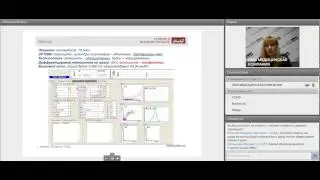2. Headless wordpress post api with custom field and taxonomy Part-2
Headless WordPress is revolutionizing the way developers build websites by decoupling the front-end and back-end, offering unmatched flexibility, performance, and scalability. With traditional WordPress setups, you may encounter limitations in delivering fast and dynamic web experiences, especially with modern JavaScript frameworks. This is where headless WordPress comes in, giving developers the power to use WordPress as a CMS while building the front-end using advanced technologies like Next.js, React, and Vue.js. In this comprehensive guide, we'll explore what headless WordPress is, how it works with popular frameworks, and why it's the future of website development.
What is Headless WordPress?
Headless WordPress refers to separating WordPress's back-end (content management system) from the front-end presentation layer. By going headless, you're free to choose any technology to build the front-end, such as Next.js or React.js. This setup enables developers to create highly interactive, fast, and user-friendly websites that offer superior user experiences. Instead of WordPress rendering your pages, your front-end framework (like Next.js or React) will handle it, while WordPress remains your trusted CMS in the background.
Benefits of Using Headless WordPress
There are many reasons why developers and businesses are turning to headless WordPress for their websites:
Performance: With Next.js or React, the front-end is optimized for speed, reducing load times and improving the overall user experience. Headless WordPress allows the use of static site generation (SSG) and server-side rendering (SSR), boosting performance.
Scalability: Decoupling the front-end from the back-end makes it easier to scale your application. You can use GraphQL or REST APIs to fetch data from WordPress, ensuring efficient communication between the front-end and back-end.
Customization: You're not bound by the limitations of WordPress themes. Using React, Next.js, or Vue.js, you have full control over your front-end design and functionality, allowing for a completely customized and unique experience.
Flexibility: Headless WordPress integrates seamlessly with various front-end technologies like React, Next.js, and Vue.js, giving you the flexibility to build the exact website you want. For example, building headless WordPress with Next.js ensures high performance and SEO benefits, while headless WordPress with React.js offers a robust component-based structure for dynamic and interactive UI development.
Future-proofing: Headless WordPress positions your website for future growth. As web technologies evolve, you're not tied down to one platform. You can easily integrate newer technologies without rebuilding your entire website.
Headless WordPress with Next.js
One of the most popular combinations is headless WordPress with Next.js. Next.js, a powerful React framework, is perfect for headless WordPress because it offers static site generation (SSG) and server-side rendering (SSR), making your website faster and more SEO-friendly. With Next.js, you can pull data from WordPress via GraphQL or the WordPress REST API and render it dynamically on the front-end. This setup ensures a smooth, highly performant experience for your users.
Headless WordPress with React.js
Headless WordPress with React.js is another popular combination for creating modern web applications. React’s component-based architecture allows for efficient development and easy maintenance. When using React with headless WordPress, you can leverage the power of GraphQL or REST APIs to fetch your content.
For eCommerce businesses, headless WordPress with WooCommerce offers a unique advantage. You can maintain the flexibility and ease of use of WordPress for managing your products, orders, and customers while using a modern front-end framework like Next.js or Vue.js to deliver a seamless shopping experience. This setup enhances both the performance and design of your WooCommerce store, ensuring better customer engagement and faster load times.
Headless WordPress with Vue.js
In addition to Next.js and React.js, headless WordPress with Vue.js is another excellent option for developers who prefer the Vue framework. Vue.js, with its simple yet powerful features, works seamlessly with WordPress to build a dynamic, engaging front-end. Just like with React, you can use GraphQL or REST APIs to pull your content into your Vue.js app and create a modern, user-friendly interface.
How to Use GraphQL with Headless WordPress
GraphQL is becoming the go-to technology for fetching data in headless WordPress setups.
Stay Connected:
Facebook: / shakilwebshaper
Website: https://visionary-liger-e56b5b.netlif...
LinkedIn: / shakilwp
github: https://github.com/webshakil







